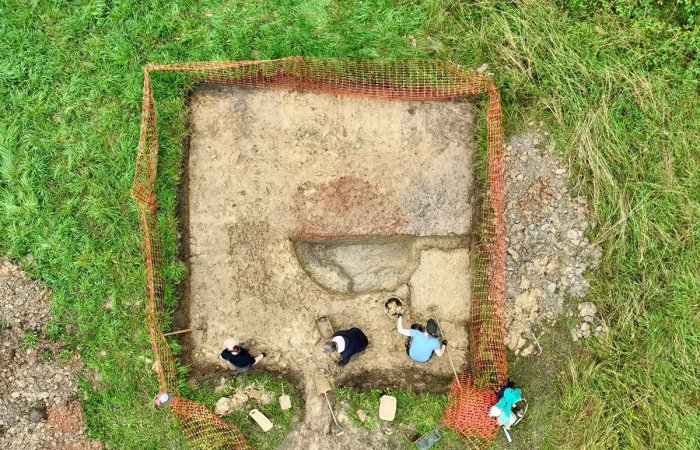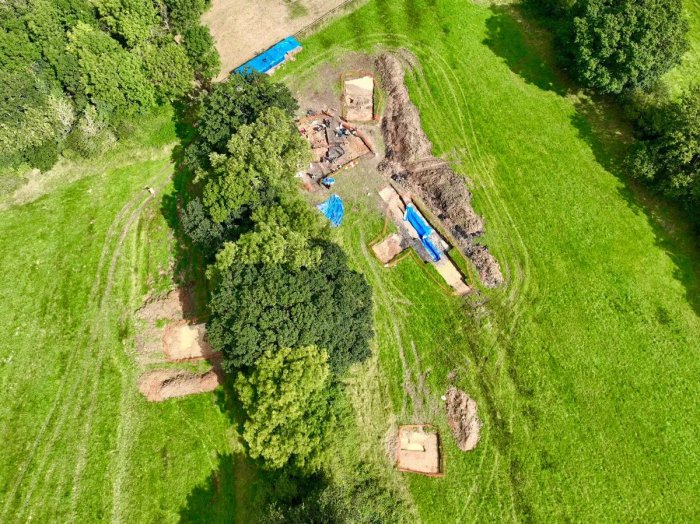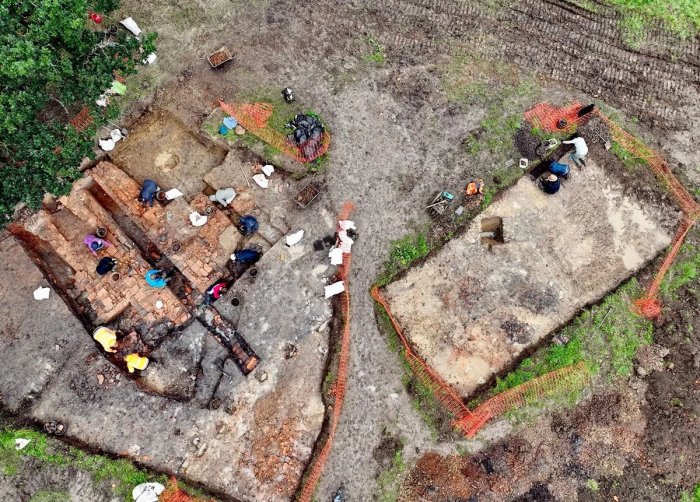Jan Bartek – AncientPages.com – The weather was not encouraging excavations of any kind. Still, a group of archaeologists and volunteers were determined to unravel the mystery of the Roman tile kiln at Brandiers Farm, UK.

Roman tile kiln from the air. Credit: Cotswold Archaeology
Cleaning up the site after the torrential rain and winds brought by storm Antoni was time-consuming and required lots of work. However, volunteers dedicated to the cause managed to get the situation under control, and it was possible to resume archaeological investigations.
One of the goals was to uncover the truth of the Roman tile kiln.
“The Roman tile kiln should be symmetrical, but so far we haven’t been able to see the back edge of the northern half. We initially thought the wall had been lost through robbing, but even as we continued to clean around it we were just not finding any tile!
On Monday, we machined off some of the redeposited natural to try and understand why there’s nothing surviving here, but this still didn’t solve the mystery of the missing north half of the kiln,” the Cotswold Archaeology team tells in a press statement.

Credit: Cotswold Archaeology
The next day, a layer of Roman rubble to the southeast of the kiln was removed, and the area was investigated. This was a successful move because the team discovered a new structure!
Two team members “have been excavating just to the west of this, down the side of the kiln, and have found evidence of an even earlier kiln, that may have fired the tiles that built our Brandiers kiln!”

Credit: Cotswold Archaeology
When work continued on Wednesday, the Cotswold Archaeology team cleaned the kiln and “uncovered a heat-affected surface at the back of the flue, and revealed the north-side interior wall. The south-side exterior wall was also discovered to be heat-affected, confirming suspicions that an early kiln stood next to our kiln, and likely used our south-side wall as a flue wall.
“We’re even floating the idea of a chain of kilns, each sharing walls and flues and time went by,” archaeologists told the press.
See also: More Archaeology News
“Elsewhere on site there were still discoveries to be made — in Trench 6, the volunteers found a drainage ditch that took rain off and away from the kiln terrace, helping to keep the Roman potters’ feet dry in the British summertime,” Cotswold Archaeology informed.
Written by Jan Bartek – AncientPages.com Staff Writer





